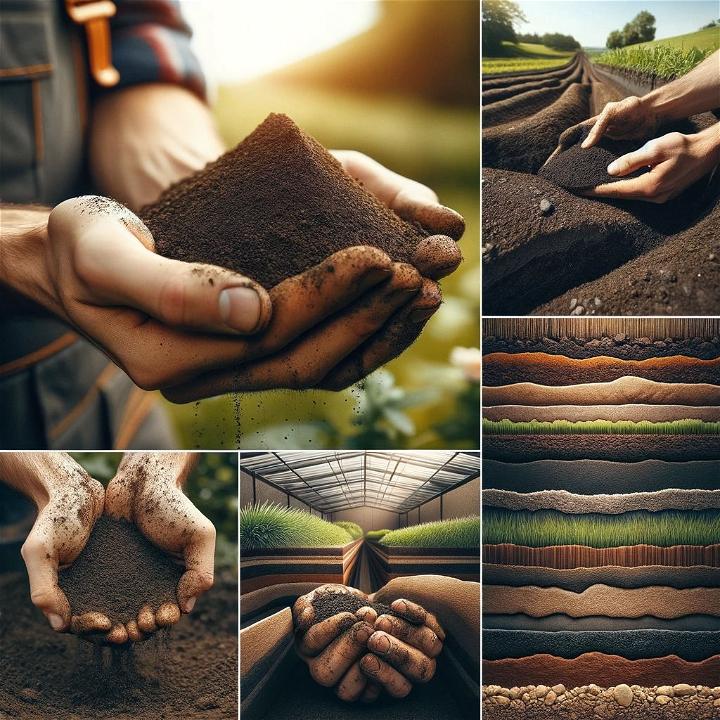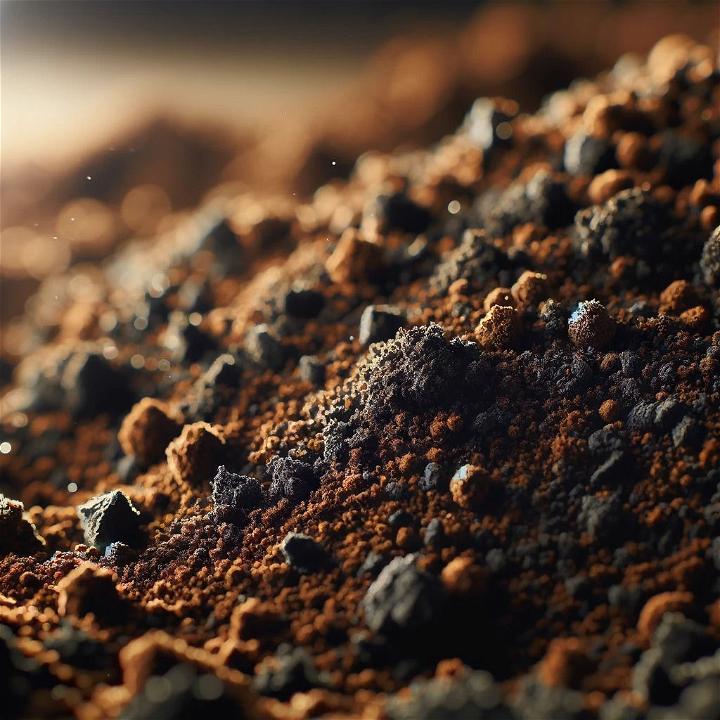Loam soil is a fundamental component for successful gardening and optimal plant growth. It is a soil type that contains a balanced mixture of sand, silt, and clay. The composition of loam soil typically consists of about 40% sand, 40% silt, and 20% clay. This balance allows loam soil to retain moisture, provide good drainage, and offer essential nutrients to plants.
Gardeners often favor loam soil because of its versatility and fertility. It serves as an excellent medium for a wide variety of plants, creating an environment where roots can easily establish and thrive. The texture of loam soil strikes a perfect balance between water retention and drainage, making it ideal for promoting healthy root development and overall plant growth.
Understanding the significance of loam soil in gardening can significantly impact the success of your plants. By utilizing this well-balanced soil type, gardeners can create an optimal growing environment that supports plant health and vitality. Whether you are a novice or an experienced gardener, harnessing the benefits of loam soil can enhance the beauty and productivity of your garden.

Understanding Loam Soil
Learn all about loam soil – its composition and texture in detail below.
Composition of Loam Soil
Loam soil is a balanced mixture of sand, silt, and clay, each contributing to its unique properties. Typically, loam soil consists of approximately 40% sand, 40% silt, and 20% clay. This composition provides an ideal environment for plant growth, offering the necessary nutrients and drainage capability. The mineral content in loam soil plays a vital role in supporting a diverse range of vegetation, making it a popular choice for gardening and agriculture.
To learn more about the mineral composition of loam soil, you can check out this resource for further insights.
Texture of Loam Soil
The texture of loam soil is a crucial factor that sets it apart from other soil types. With its balanced composition of sand, silt, and clay, loam soil exhibits a medium texture that strikes a perfect equilibrium between drainage and moisture retention. This unique texture allows loam soil to retain sufficient water for plant growth while preventing waterlogging, ensuring optimal aeration for roots to thrive.
For additional information on soil texture and its significance, you can refer to this source.
Benefits of Loam Soil
Loam soil is a gardener’s best friend for various reasons. Let’s delve into the advantages it offers:
Nutrient Retention and Drainage
One of the key benefits of loam soil is its ability to retain nutrients essential for plant growth while ensuring efficient drainage. The balanced composition of loam soil combines sand, silt, and clay particles in equal amounts, creating a porous structure that acts like a sponge, holding moisture and nutrients for plant roots to access. This optimal balance allows for the uptake of vital nutrients by plants while preventing waterlogging, ultimately promoting healthy root development and overall plant growth.
Versatility in Plant Cultivation
Loam soil stands out for its versatility in supporting a wide range of plant species. Its balanced properties make it an ideal choice for various gardening needs, whether you’re cultivating flowers, vegetables, or shrubs. The ability of loam soil to hold moisture without becoming waterlogged and its excellent drainage characteristics make it suitable for plants with different water requirements. Whether you’re embarking on a gardening quest with vegetables that thrive in well-drained soil or ornamental flowers that prefer slightly moist conditions, loam soil provides a suitable environment for diverse plant species to flourish.
By harnessing the benefits of loam soil, gardeners can create thriving landscapes with healthy and vibrant plants, thanks to its nutrient-rich composition and optimal drainage properties.
Making and Maintaining Loam Soil
To achieve the ideal loamy texture in your soil, it’s crucial to employ effective soil amendment techniques and ensure the proper pH levels. Let’s delve into methods for creating and maintaining loam soil.

Soil Amendment Techniques
When aiming to enhance your soil’s composition to resemble loam, several effective strategies can be employed:
- Incorporating Organic Matter: Adding organic materials such as well-rotted compost, leaf mold, or manure can significantly improve soil structure and nutrient content.
- Utilizing Specific Minerals: Some minerals like gypsum, limestone, or elemental sulfur can aid in modifying soil texture and pH levels to align with loamy characteristics.
- Balancing Sand, Silt, and Clay: Loam soil consists of a balanced mix of sand, silt, and clay particles. Adjusting these components through soil amendments can help achieve the desired loamy texture.
For more detailed insights on soil amendment techniques.
Testing and Adjusting Soil pH
Maintaining proper pH levels is essential in creating an optimal environment for loam soil. Here’s how you can ensure your soil’s pH is conducive to loamy conditions:
- Monitoring pH Levels: Regularly test the pH of your soil using simple kits or professional soil testing services to determine its acidity or alkalinity.
- Adjusting pH: If the pH levels are not within the ideal range for loam soil (around 6.0 to 6.8), you can modify them by adding lime to raise pH or elemental sulfur to lower pH accordingly.
Understanding and managing soil pH is crucial for sustaining healthy loam soil. To learn more about adjusting soil pH, check out informative resources like this one.
By implementing suitable soil amendment techniques and maintaining optimal pH levels, you can create and sustain loam soil that nurtures thriving plant growth and garden vitality.
FAQs
In understanding loam soil, you might have some common questions that arise. Let’s delve into these FAQs to provide you with a clearer picture of what loam soil is all about.
What is loam soil composed of?
Loam soil is a balanced combination of sand, silt, and clay, making it incredibly versatile for gardening and agriculture. This composition allows loam soil to retain moisture while also providing adequate drainage and aeration for plant roots to thrive.
Why is loam soil considered ideal for gardening?
One key reason why loam soil is highly favored by gardeners is its ability to hold moisture without becoming waterlogged. This means that plants receive essential hydration while also benefiting from the necessary oxygen flow to their roots. Additionally, the nutrient-rich nature of loam soil supports healthy plant growth and development.
How can I identify loam soil in my garden?
To identify loam soil, you can perform a simple texture test. Loam soil has a soft, crumbly texture that holds its shape when squeezed but also breaks apart easily. It feels neither too sandy nor too sticky, offering the perfect balance for plant cultivation.
Can loam soil be improved for better plant growth?
Yes, loam soil can be enhanced by adding organic matter such as compost or well-rotted manure. These additions help boost the soil’s fertility, improve its structure, and promote better plant growth. Regularly amending loam soil can ensure long-term soil health and productivity in your garden.
Are there different types of loam soil?
Loam soil can vary in texture and composition, leading to different classifications such as sandy loam, silty loam, or clay loam. Each type offers unique characteristics that can influence plant growth and soil management strategies. Understanding the specific type of loam soil in your garden can help tailor your gardening practices for optimal results.
Let’s continue exploring the fascinating world of loam soil to deepen our knowledge and enhance our gardening endeavors.
Conclusion
Loam soil, with its balanced mix of sand, silt, and clay particles, stands out as the ideal foundation for robust plant growth. Understanding the composition and benefits of loam soil can significantly enhance your gardening experience. By providing a fertile environment enriched with essential nutrients and proper drainage, loam soil sets the stage for healthy plants to thrive.
Key Takeaways:
- Loam soil offers a harmonious blend of sand, silt, and clay, making it suitable for a wide variety of plants.
- Its balanced composition ensures adequate drainage, moisture retention, and aeration, promoting root development and overall plant health.
- Gardening in loam soil reduces the need for excessive watering and fertilization, contributing to sustainable and low-maintenance gardening practices.
Next Steps:
- Test Your Soil: Determine if your garden soil resembles loam or requires amending to achieve this optimal composition.
- Enhance Soil Quality: Incorporate organic matter like compost or mulch to further enrich your soil’s fertility and texture.
- Select Plants Wisely: Choose plant varieties that thrive in loam soil to maximize growth and yield in your garden.
By embracing the versatility and fertility of loam soil, you pave the way for a flourishing garden filled with vibrant, healthy plants. Embrace the richness of loam soil to cultivate a thriving garden space that embodies the beauty of nature’s bounty.
Explore Soil: In-Depth Articles & Resources to Boost Your Understanding
Enhance your knowledge of soil with our in-depth articles and resources. Boost your understanding and explore soil like never before.
- Enhancing Soil with Phosphorus: Learn practical techniques to boost phosphorus levels in your soil, promoting vibrant plant growth.
- Locating Loam Soil: Our beginner’s guide details where to find the best loam soil for your gardening needs, ensuring success.
- Topsoil Advantages: Uncover the key uses and benefits of topsoil for enhancing your garden’s health and productivity.
- Common Topsoil Mistakes: Avoid the typical errors in using topsoil with our guide on how to navigate top soil pitfalls for a flourishing garden.
- Exploring Soil Types: Our complete guide offers an in-depth look at the various soil types and their suitability for different gardening projects.
- Guide to Soil Amendments: Enhance your garden naturally with our strategies for soil improvement, fostering organic growth and health.
- Boosting Soil pH: Achieve a healthier garden by learning how to effectively raise soil pH for optimal plant health.
- Reducing Soil pH: Discover simple and efficient ways to lower soil pH for acid-loving plants in your garden.
- DIY Soil pH Testing: Master the easy steps to test your soil’s pH level at home, ensuring your garden’s success.
- The Importance of Soil: Explore why soil is crucial for our ecosystem and its indispensable role in supporting life.
- Soil Fundamentals: Delve into the composition, types, and functions of soil, the foundation of all gardening endeavors.
